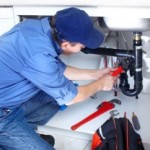When we get into our cars to drive to work or school each day, we take little notice of the materials (like steel) in the frame and body. Your bed frame and many appliances may be composed of steel. The roads and bridges you drive on are reinforced with steel rods and beams. Yes, steel is vital to many of our structures today and is made by special processes like electric arc furnaces and UHP electrodes. But have you ever wondered how these huge furnaces work? Let’s take a look, shall we?
Batch Melting
Furnaces for producing steel are designed to melt batches of steel called heats. A furnace smelting cycle contains several operations:
Charging
What grade steel do you wish to produce? This will determine how the charge bucket is loaded with scrap materials. It’s important to load the materials so they produce an even pool of molten material when melted. In addition, scrap has to be loaded so there are so sudden “cave ins” of material. This sudden change can be enough to damage UHP electrodes and can actually block the flow of molten metal. In some cases, carbon is added in the charging process.
When charging, a bucket filled with scrap is positioned over the furnace. The bottom of the bucket opens up and allows the scrap to fall into the furnace. The electrode then lowers into position (into the scrap) to create an arc and the melting cycle begins.
Ideally, charging can be done with only one bucket load of scrap. However, it may take several. The aim is to use as few buckets as possible to eliminate loss of heat.
Melting
Heating is accomplished by inducing electricity to the furnace. The electricity is conducted by large UHP electrodes. A UHP graphite electrode is used for high performance operations. The electrode is a large cylindrical section of graphite which conducts electricity and heats the scrap. This process is similar to a welder using a welding electrode.
Separation
Impurities in the scrap must be separated from the iron. This is usually accomplished by introducing oxygen which forms oxides that float to the top for removal. Next, slag (byproducts) can be poured out through a special opening or door.
Finishing
Once the right temperature and composition is reached, the molten steel can then be poured from the arc furnace and into a ladle furnace. In this process, oxides may be removed and alloy metals can be added. This is an oversimplification of arc furnaces, UHP electrodes and steel producing methods, but it helps you get a general idea of the process.





